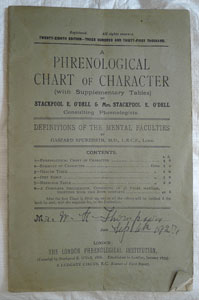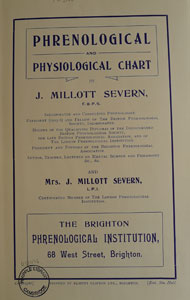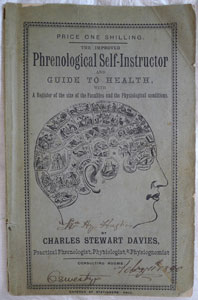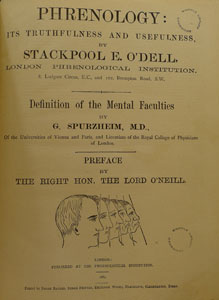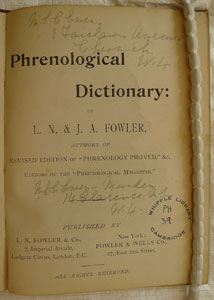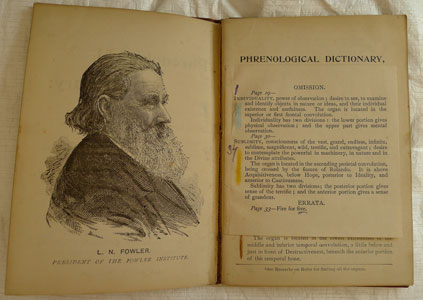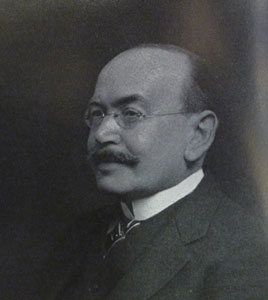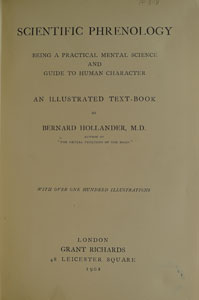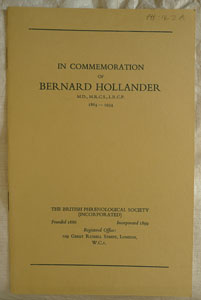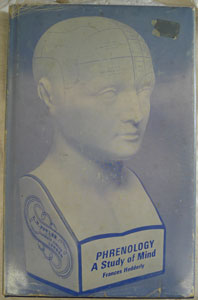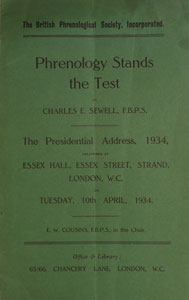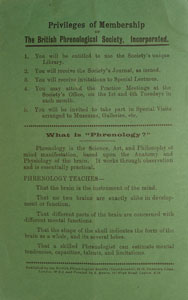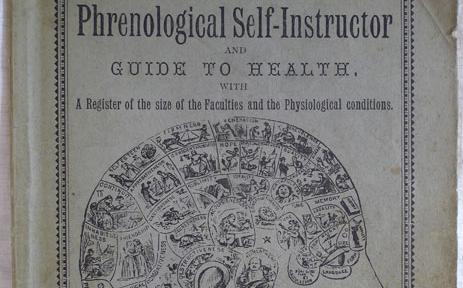
According to the now defunct British Phrenological Society, phrenology is:
the science, art, and philosophy of mind manifestation, based upon the anatomy and physiology of the brain. It works through observation and is essentially practical.
It is more commonly known as a method for reading a person's character through examining the various bumps on their head. This pseudoscience was very popular in the 19th century and developed a strong following in Edinburgh and London. Phrenology was founded by Franz Josef Gall (1758–1828), although he never used that term himself, and was popularised by his student Johann Gaspar Spurheim (1776–1832). Although it was first developed by a qualified anatomist and doctor, phrenology became a 'science' which could be learned by anyone and this led to it being ridiculed by some while others strived to defend it.
Phrenological charts
The basic phrenological chart contained a list of characteristics, faculties or temperaments with each one then divided in a scale from high to low. The customer is told which degree on the scale they fit and are then give instructions on how to cultivate or restrain this temperament if needed. Having the highest degree in most cases was the most positive, but on some occasions having the middle point on the scale was better. For example, on the O'Dell's chart the 6th degree for the Faculty of Order (arrangement of things in all part of life not just objects) states 'You are often very annoying to others, as you go to an extreme in particularity. Precise and formal to a fault'. Charts also tended to include marriage and food or diet tables which would be completed by the phrenologist for extra payment. A few of the charts in the Whipple's collection have been completed. The three charts show below are by Stackpool E. and Mrs O'Dell, J. Millott Severn and his wife and Charles Stewart Davies.
Click on an image to enlarge
Phrenology: a family run business
As demonstrated above, phrenology was often taken up as a family business. Stackpool E. O'Dell and his wife Catherine ran the London Phrenological Institution, gave lectures, performed phrenological consultations and wrote articles on the subject, some of which were published in Phrenology: its truthfulness and usefulness. Other O'Dells were also involved in phrenology, co-authoring books with Stackpool. Meetings held by this couple led to Joseph Millott Severn meeting his second wife, Alice, and they settled down in Brighton opening consulting rooms and establishing the Bright and Hove Phrenological Society with J. P. Blackford. A more known name in the world of phrenology is that of the Fowlers. Here we can see the title page and portrait from a dictionary that was written by Lorenzo Fowler and his daughter Jessie. She became Vice President of the American Institution of Phrenology and edited both the American and British Phrenological Journals at various times. Her mother Lydia also lectured and wrote on the subject and was the first American born woman to receive a medical degree in that country.
Bernard Hollander’s scientific phrenology
Bernard Hollander (1864–1937), a Vienna born psychiatrist, is noted for promoting modern and scientific phrenology. He began writing about this subject in the mid 1880s, basing his research on the works of Franz Josef Gall (1758–1828). His other interests included ethology (founding the Ethological Society in 1904), lunacy law reform and hypnotism. In the preface to Scientific phrenology: being a practical mental science and guide to human character, it states that '...in order to put a stop to the misrepresentations of some "professors" of the science, the author presents this volume of a theory of Phrenology in a very much modified and altered form'. Towards the end of the book he goes on to say that 'Even when a subject is practised exclusively by quacks, there may still be some truth in it' and uses the fact that mesmerism lead to the discovery of hypnotism to back up this theory. The centenary of Hollander's birth was commemorated at a meeting of the British Phrenological Society and a corresponding pamphlet produced (see below). In it Le Grand mentions that Hollander was advised by his publishers that if he removed the word Phrenology from the title of one of his books he would become famous; he went against this advice and left it in.
British Phrenological Society
The Society was established in 1887 by the American phrenologist Lorenzo Fowler and was disbanded in 1967. The foreword of Frances Hedderly's Phrenology: a study of mind mentions the closure of the Society: 'When she felt that the work of the Society had been done and that the influence of phrenology on orthodox science was becoming sufficiently appreciated, she had the wisdom and the lack of vanity required to conclude its affairs and pass its valuable collections to institutions where they could be studied by professional scholars'. One of its Presidents, Charles E. Sewell, defended and promoted the use of phrenology in his presidential addresses, one of which we have in our collection. He suggested that it could be used by parents to select vocations for their children, to aid judges or magistrates in deciding whether someone was guilty or not, and that it could be used by businesses to test the capabilities of staff. He ends his 1934 presidential address by saying 'Let me recommend you therefore to seriously consider the advisability of becoming acquainted with this science which will enable you to understand yourself and your fellows. It makes for tolerance, co-operation and peace!'
More information about the Phrenology Collection and selected items from it can be found on our Rare Book Collections web pages and our Book Blog.
Dawn Moutrey

